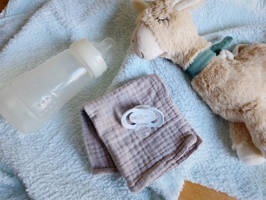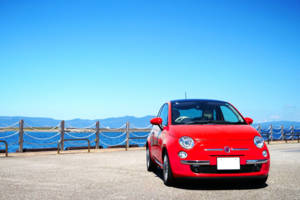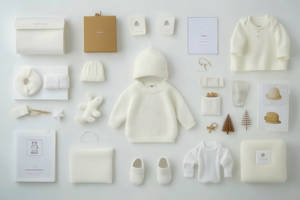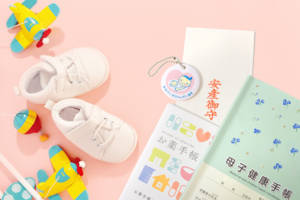Home infestation in Japan and what to do about it
Sunday, October 27, 2019
Don´t let them bug you!

[Edited 09.22.2022]
They crawl, they creep. they slither. Some sneak, some squirm, some wriggle. Bugs in Japan. Summer mornings here can feel like waking up in a Franz Kafka story. One might not become a bug but can find the house teeming with them. As a country spanning several climate zones, from sub-arctic at the northern tip of Hokkaido to subtropical in the deep south of Okinawa, the biodiversity of the Japanese archipelago is something to behold. People moving to or visiting Japan should mentally prepare themselves for a vast variety of bugs and insects. There are poisonous, huge centipedes, arachnoids of all sizes, helicopter-like fireflies, the zillion-decibel loud cicadas, and much more. It becomes clear how the Pokémon franchise thought up thousands of colorful monsters when you encounter real-life little monsters at every corner.
Besides the climate conditions with very cold winters in the north and very hot and humid summers all across the country another challenge when living in Japan is home infestations. Older houses with bad insolation do not only have a hard time keeping out the cold of winter or containing the air conditioning in the summers, but they also invite many-legged, unwanted guests.
Most of them are harmless and won't bother people like the Nipponopsalididae, the Japanese version of daddy long-legs. They don't come in clusters and are content with a small web in a corner. Actually, they can be helpful in getting rid of nasty insects such as mosquitos.
Gokiburi (Japanese cockroach)
Cockroaches or gokiburi are something that everyone living in Japan will inevitably encounter. They appear during the hot and humid summer months between April and September. Cockroaches are generally considered an indicator of uncleanliness and even though they love dirt and garbage as breeding and feeding grounds, encountering a cockroach in Japanese houses does not necessarily mean there is already an infestation or that the environment is unclean. Nonetheless, it is better to get rid of them as fast as possible, because where there is one there will be more.
The famous myth of cockroaches being able to survive a nuclear fallout is not unjustified. They are breathtakingly resilient. Being able to survive for 9 days without a head, 40 minutes without air, and several weeks without food, they breed hundreds of their kind within days, and in the case of the Japanese gokiburi, their ability to fly makes them seem like a supernatural species of the bug world. So if one of these little creeps shows up, one should remember that they can carry at least 33 types of bacteria, six kinds of parasites, and seven pathogens and take immediate action.
To get rid of them, throwing them out the window might not be the best solution. They enter houses for food waste and water and might enter again in no time. Squashing or burning them is a way to do it, but even though they don´t release their eggs when stepped on as many fear, they are very tough and might not be as dead as they seem.
When in doubt and to avoid a full-blown infestation, residents should use special sprays and traps targeting cockroaches. Examples are the Gokijet and Raid Max spray, which kill the roach immediately, and the Goki Barrier spray, which can be sprayed around the house to prevent them from entering.
Two alternative methods are Roach Motels, little boxes in which cockroaches get stuck to a poisonous glue, and probably one of the most effective means, Roach Traps as Gokiburi Hoihoi and Combat Roach Station. These traps lure cockroaches to poisoned bait, which is carried to the nests to start a chain reaction of extermination. This kind of poison bait is preferable to exposed poison bait around the home because the hidden bait inside the trap does not endanger children and animals. Nevertheless, anything poisonous poses a risk to humans and animals and should therefore be used responsibly.
Probably the last weapon of choice before calling a professional is to use a bug bomb or varsan (バルサン). It literally gasses the home requiring residents to leave the space for 3 or 4 hours, just make sure to ventilate and vacuum the home thoroughly afterward.
Non-chemical solutions to prevent a cockroach infestation include, sealing all possible cracks and slits inside and outside the house, keeping drains and outlets in bathtubs and basins shut, getting rid of plumbing leaks (cockroaches can only survive one or two weeks without water), storing trash outside or in sealed containers, washing dishes immediately and storing food in closed boxes or inside the fridge. Even though this may prevent cockroaches from ever entering the house, there is no foolproof solution and one might have to rely on pesticides in the end.Dani (Japanese bedbug or tatami mite)
Besides cockroaches, another silent and underrated creep and cause of infestation is the Japanese bedbug or tatami mite called dani. Even though they don´t pose a great risk to health, they bite humans at night and are very hard to get rid of. Usually, they can be found in cheap hostels or other places with changing residents like low-cost hotels or shared housing. They can travel and spread through luggage, clothes, or rental bedding, so it is very easy to carry their eggs unknowingly from one place to another. Their bites are itchy and can cause allergic reactions. Usually, bites and reminisce of their feces are also the only way to know they are even there.
To get rid of them, it is very important to wash and vacuum clean any fabrics, bedding, and pillows several times a week. Balconies in Japan are used to hang clothing and bedding but this practice is also a way to kill off dani because of their sensitivity to UV light.
To be on the safe side, the use of anti-dani spray and dust mite repellents is also recommended. The spray is applied to the bedding after getting up in the morning followed by thorough vacuuming after a designated amount of time. In rare, worst-case scenario where they have already have spread into colonies this must be treated by professional exterminators, but usually using spray and repellents in combination with regular cleansing, should be enough to get rid of them.
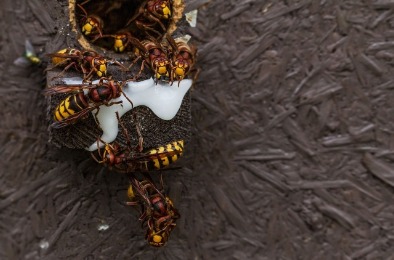
Suzumebachi (Japanese giant hornet)
When living or visiting Japan it is also very likely to encounter the Japanese giant hornets called suzumebachi and they are dangerous. They build their nests mostly in mountainous regions but have been spreading to the cities in recent years.
In 2014 half the emergency calls to the Shibuya Ward Office Public Hygiene Division were in relation to hornets and wasps and the numbers are increasing. The sting of a suzumebachi can be painful at best and even life-threatening, so avoiding them is of the utmost importance.
Hornet nests can be found on trees, under roofs and bridges, in attics as well as underground. They usually stay close to their nests, so one hornet usually means more. When a giant hornet's nest is found in or around a house, leave the nest alone and call a local division of the Japan Pest Control Association. Suzumebachi contrary to wasps and bees are aggressive and their stings can be extremely harmful to humans.
Your Ward Office can help guide you if you are unsure about the species, and in the case of a suzumebachi nest, many cities will foot the cost of the extermination because it is a public safety hazard. However, if the process of extermination results in some kind of property damage, repair costs have to be covered on your own or by your landlord. Their most active time is during the mating season from September to October, but they already wake from hibernation in February and will build full-fledged nests by late spring.
To prevent an attack by a giant hornet it is best to avoid dark clothing while hiking (they tend to attack dark, moving objects), wear long sleeves and trousers, do not run away, and do not swat them away with your hands.
It is possible to use insecticides such as the Suzumebachi Magunamu Jetto or Hachi Daun spray against a single hornet, but as soon as a nest is located, leave it to the professionals.
-----------------------
Some people say Japan's Shinto-Buddhist pantheon is so rich with gods, demons, and spirits because every summer nature just explodes with life and creatures in all shapes and sizes. So even if these little gods disguised as creepers and crawlers start coming into one's house to bug, one should uninvite them as respectfully as possible, because one thing is almost certain. They´ll be back next year.
Overview Insecticides
1. Fleas, Wants, Mites (Dani - ダニ)
- Dani Yoke (spray version or solid to put in rooms)
- Dani Bāria (Seal types)
- Dani Off
2. Cockroach (Gokiburi - ゴキブリ)
Āsuretto W, Āsuretto Puro, Āsuretto (Various version for all rooms)
- Barusan
- Gokiburi Yoke
3. Wasps, Hornets (Wasupu, Kumabachi, Suzumebachi - ワスプ、熊蜂、スズメバチ)
4. Fly, Mosquito (Hae, Ka, Kobae, Mosukito, - ハエ、カ, コバエ,モスキート)
- Kobae ga hoi hoi (small boxes in which the flies/mosquitos get stuck)
- Kobae ga korori (spray)
- Incense - katori senko (good for outdoors)
- Insect nets
----------------------------------------------
About the Author

Growing up as an avid reader I started writing stories at an early age and never stopped. After spending a great deal of my life in Berlin, immersing myself in its lively, pulsing atmosphere, I moved to Japan in 2019 to experience new adventures and seek inspiration. When I don´t write short stories and novels, I work as a freelance journalist covering diverse topics. (Homepage: https://christiandamerow.wixsite.com/meinewebsite)




